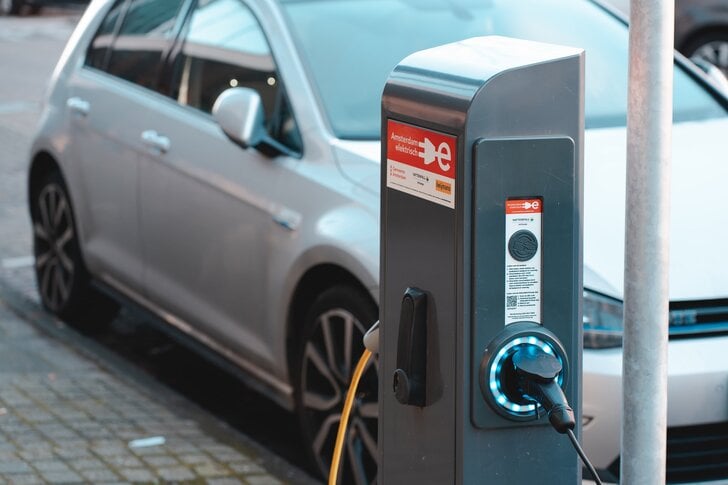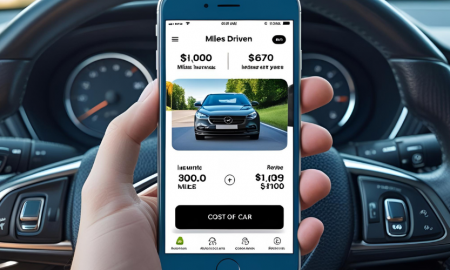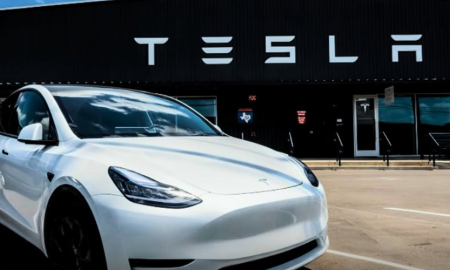
Embracing Change: The Rise of Electric Vehicle Conversions

Change can be daunting, especially when it involves something as personal as our vehicles. For years, car enthusiasts have expressed reservations about transitioning from their cherished vintage cars to Electric Vehicles (EVs). However, the automotive landscape has evolved significantly since 2021, bringing exciting advancements that blend the old with the new.

Ernest Ojeh/Unsplash | According to Ford’s Eluminator powertrain plan, soon enough, customers will be able to swap their old combustion engines with an EV motor
With Ford’s EV crate conversion system, you can swap your old combustion engine with an EV motor. Sounds too good to be true, right? Well, we ain’t kidding. Find out more in this post.
Ford’s Innovative EV Conversion: A Game-Changer
Back in August 2021, Ford introduced its groundbreaking Eluminator powertrain plan. This technology enabled car owners to replace their old combustion engines with an EV motor, a concept that initially seemed too futuristic to many. Since then, this technology has not only become a reality but has also gained considerable popularity among car enthusiasts.
Progress Since the Initial Tease
Ford’s Eluminator powertrain, first teased on social media in 2021, was officially launched at the 2021 SEMA show. Since then, it has revolutionized the way we think about EV conversions. Offering a range of electric powertrain solutions for various models, Ford has set a new standard in the EV industry. Their system, designed to be user-friendly and efficient, has attracted a wide range of customers, from vintage car lovers to environmental enthusiasts.

Adrian N/Unsplash | Ford shared a glimpse of the electric crate powertrain solution on its Twitter handle in the last few weeks of August
Chevrolet’s eCrate System: A Worthy Competitor
Not to be outdone, Chevrolet’s eCrate system, which emerged in 2018 and underwent several refinements, has also made significant strides in the market. As predicted, the eCrate system, officially launched shortly after its Ford counterpart, has provided a comparable, if not competitive, alternative for EV conversions. These developments indicate a growing trend in the automotive industry toward sustainable and customizable solutions.
Technical Details and Customer Response
Since the initial lack of details in 2021, both Ford and Chevrolet have released comprehensive information about their EV conversion kits, including battery options, controllers, and thermal management solutions. The cost, initially a mystery, has now been disclosed, offering various options to suit different budgets.
Customer response has been overwhelmingly positive. Skepticism has given way to enthusiasm as more and more car owners embrace the idea of breathing new life into their classic vehicles while contributing to environmental sustainability. The success of these EV conversion kits has proven that traditional and modern technology can coexist, providing a bridge between the past and the future of automotive design.

Nadine Shaabana/Unsplash | The company believes that customers might be a little skeptical about changing a critical part of their cars, but it’s hoping they’ll come around sooner or later
Looking Ahead: The Future of EV Conversions
The journey of EV conversions from a novel idea in 2021 to a mainstream option in 2024 showcases the rapid advancements in automotive technology. As we move forward, we can expect further innovations in this field, making EV conversions more accessible, efficient, and appealing to a broader audience. The evolution of the Eluminator and eCrate systems is just the beginning of a new era in automotive history, where sustainability meets legacy.
More inDriving
-
`
Florida Auto Insurance Rates Finally Drop. But for How Long?
After years of rising premiums, Florida drivers are finally seeing lower auto insurance rates on the horizon. For 2025, the state’s...
August 15, 2025 -
`
U.S. Reduces Tariffs on Japanese Cars to 15% Under Trump’s Deal
In a move reshaping U.S.-Japan trade relations, former President Donald Trump confirmed a new agreement that slashes tariffs on Japanese car...
August 9, 2025 -
`
Adults in Ohio Face Stricter Rules to Obtain Driver’s License
Ohio has passed a new law that will change the way adults under 21 get their driver’s licenses. Signed into law...
July 31, 2025 -
`
Gen Z Craves Career Guidance, But Their Parents Are Struggling Too
Gen Z is stepping into the future with curiosity and ambition—but they’re not doing it alone. A growing number of teens...
July 25, 2025 -
`
Do Car Insurance Companies Offer Pay-As-You-Go Plans?
Car insurance premiums often feel unfair to people who rarely drive. Yet, most traditional auto policies still charge a fixed monthly...
July 17, 2025 -
`
Why the Koenigsegg Sadair Spear Is the Ultimate Hypercar Beast
Koenigsegg has revealed a new beast—the Sadair’s Spear. Tuning its focus on raw performance and brutal speed, this hypercar marks the...
July 11, 2025 -
`
Which States Have the Safest—and Riskiest—Drivers in America?
Driving safety isn’t just about skill. It’s also about location. A recent nationwide report shines a spotlight on where drivers are...
July 4, 2025 -
`
How to Save on Tesla Car Insurance Without Compromising Coverage
Owning a Tesla often brings savings on fuel and a futuristic driving experience, but the conversation changes quickly when it comes...
June 26, 2025 -
`
10 Weird Cars That Turned Heads and Won Hearts
Some cars turn heads with speed, others with luxury—but a rare few grab your attention simply by being delightfully strange. From...
June 20, 2025















You must be logged in to post a comment Login